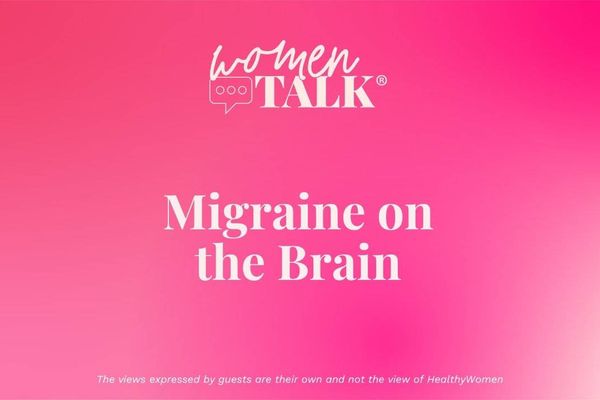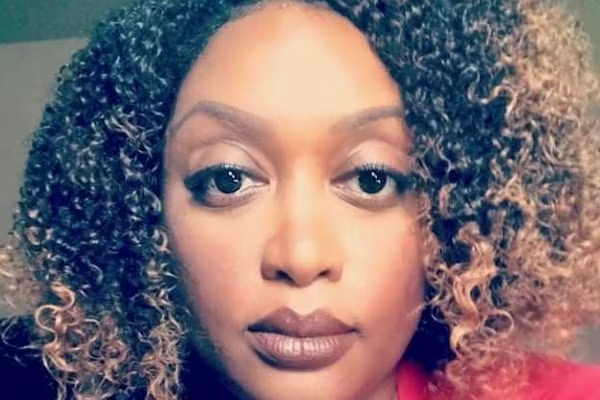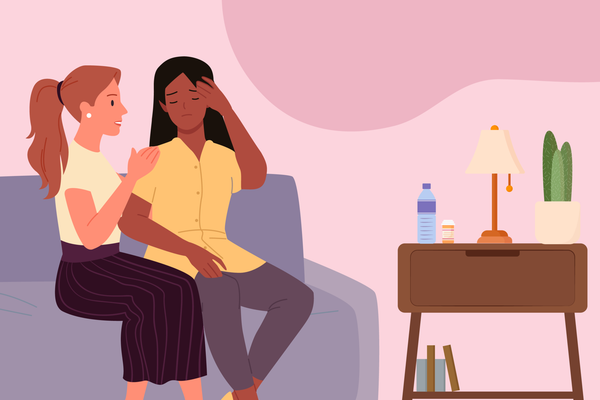By Gail Sarisky
Horrible pain in the back of my head—like someone stabbing me with a pickaxe. That’s what I was experiencing around the holidays at 22 years old. I had no what was going on. I would come home from work, go up to my room, shut the door, and cry hysterically. Some days I would vomit. Other days, I had extreme nausea. I was always very sensitive to the light. After a few days of this pain, I went to the doctor and was told I had migraines. I was so surprised as I had never realized they could cause so much pain!
The doctor gave me the only available medicine at the time, but I found that I often threw it up. I felt like I had no answers and just had to suffer through these awful migraines whenever my life was stressful.
Years later, I became a nurse. I started getting migraines more frequently so one of the doctors I worked with suggested I see a neurologist. The neurologist explained to me that there were a number of factors that could set off someone’s migraines and how important it was to figure out what your individual triggers were. He gave me a cocktail of medications including an antiemetic, which is effective against vomiting and nausea, in suppository form so I could take the migraine medicine without throwing up or feeling nauseous. I also had a muscle relaxer to help with the tightness in my neck. Although this cocktail helped, I found myself getting extremely sleepy at work and would have to find a spot in the hospital to lie down. Knowing I couldn’t sleep my day away at work, I ended up having to call out sick a lot and miss many days of work. This was not a good solution.
Over time, I noticed that my triggers included hormonal changes. I would get migraines whenever I ovulated and when I menstruated—meaning that I would get migraines twice a month for 2 to 3 days at a time. I would try to sleep through the days, so I didn’t feel the pain. But again, this wasn’t a long-term solution as I had to figure out a way to work. I also started on birth control pills, which helped to a degree.
After having my daughter at age 35, I started suffering from weekly migraines and calling out of work regularly. I was also diagnosed with high blood pressure. This was a tough time for me, and I rarely could find relief.
For years, I would try different solutions, but I never quite figured out how to fully prevent my migraines. What I did learn is how to manage the pain and create an improved environment. This is also useful for my patients in the hospital. I work in Mother/Baby caring for moms once they deliver. I find that many women had experienced migraines during pregnancy and were struggling after their delivery due to hormone changes and dehydration. They often can’t take medicine because they are breastfeeding. I turn the lights out, offer them caffeine (which helps some people with migraines), encourage visitors to keep the volume down, and bring them plenty of water to drink. By helping my patients, I also found the best way to help myself.
It has been 2 years since I have called out of work sick. I started advocating for myself by really understanding my triggers. Other than hormonal changes, I found that I also am triggered by stress, fatigue, monosodium glutamate (MSG), blue cheese (aged cheeses containe tyramine, which is a migraine trigger for some people), and weather changes. I carefully manage my blood pressure and prepare myself for my migraine when I know there are uncontrollable triggers in the near future.
After nearly 30 years, I can finally say that my migraines no longer control me. I now control them.
This resource was created with support from the Allergan Foundation.







